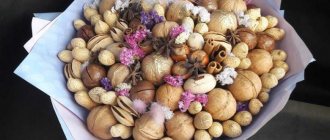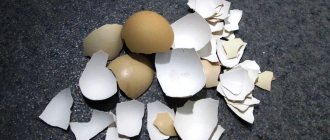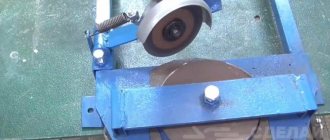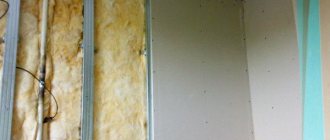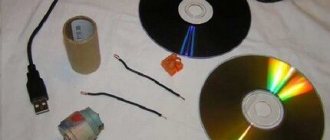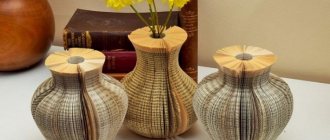Nowadays, “green” ideas are quite strong, helping people to protect nature and do everything to prevent it from poisoning their lives. Everything bad that people do to nature will definitely come back to haunt us or our descendants sooner or later. This is why it is extremely important to make every effort to use environmentally friendly materials that are easy to recycle and do not harm the environment. Even while sitting at home in quarantine, you can always come up with something original, not from non-ecological materials, like a plastic bottle, but from something more exotic, but at the same time more environmentally friendly.
For example, you can easily use coconut shells, since they are extremely environmentally friendly, but at the same time have a number of distinctive positive characteristics. Coconut shells are very durable, and therefore in those countries where there are many coconuts, people make many useful things out of them. There are many ideas for using coconut shells, because over the years of importing coconuts into our country, craftsmen have made many thousands of different crafts with their own hands.
Coconut saucepan
The use of the shell is dictated by its shape. The simplest thing you can make from it is a saucepan. To make it you need:
- Select a large, symmetrical fruit and cut off the top. Coconut shells are quite hard, so you will have to arm yourself with a hacksaw or jigsaw. In the future, the top will serve as a lid.
- Thoroughly clean all contents and dry the inside of the nut well.
- Sand the walls with coarse-grained and then fine-grained sandpaper.
- Cut handles for the saucepan from wood. Glue them with superglue. It can be mounted on small bolts by drilling appropriate holes in the walls.
- Do the same steps with the lid for the saucepan.
Industrial Applications
For centuries, people in tropical countries have made a variety of products from coconut shells. Craftsmen made dishes, jewelry, and other household items from apparently unnecessary material, or simply used shells instead of firewood. But on a global scale, shells began to be processed only at the end of the 20th century. Along with the production of coconut oil, chips, and pasta, the question of using hard shells arose.
Today there are two options for its global application:
- fertilizer for plants;
- activated carbon, which is actively used for filtration.
The shells in factories are crushed by mechanical devices and then processed in one way or another, depending on the final purpose of consumption.
Fertilizer
Coconut substrate is sold today in any specialized store. Shredded coconut remains are an excellent option for fertilizing the soil. It is used for growing indoor plants, greenhouses and open fields. The substrate for foreign briquettes consists of:
- spent shells;
- shredded coconut fibers.
The resulting filler can be used as a 100% peat substitute, for example, when planting indoor plants. Or mix with soil to fertilize it.
The high price of such a substrate is justified by its advantages. The soil retains moisture 7-10 times its volume, does not contain microorganisms and parasite larvae, and does not rot. The biologically pure product has neutral acidity and is not a sweetener.
Activated carbon for filtration
Activated carbon is produced by burning washed and dried shells at 1000°C without the use of oxygen. It is valued for its environmental friendliness and does not emit toxic substances when burned.
Activated coconut charcoal sells around the world for as much as the edible part of the fruit. And if the pulp is used as a food ingredient, then charcoal is used in:
- production of pharmaceutical products;
- as an absorbent in water filters;
- gold mining deposit for gold cyanide extraction;
- air purification systems;
- gas masks;
- cigarette filters.
It is also used in hookahs and the refining of alcoholic beverages.
Moonshine cleaning
Coconut charcoal is better than charcoal in terms of characteristics and properties. It perfectly absorbs harmful impurities and effectively eliminates the unpleasant smell of moonshine.
When buying coconut charcoal for filtering moonshine, you should pay attention to its labeling. Excellent cleaning is guaranteed only by the KAU-A brand.
There are some important points to keep in mind when using an absorbent product:
- the smaller the coals, the better they absorb harmful substances;
- The lower the strength of the drink, the greater the degree of purification.
There are two ways to cleanse your home of spirits:
- infusion;
- filtration.
When infusing a liter of moonshine, take 2 tablespoons of coal. The particles are pre-screened from the powder and then poured into a jar. The container is covered with a lid and placed in a dark place for 3-4 days, after which the drink is filtered.
For filtration, you need to purchase a ready-made column or make one from a glass jar. Cotton pads, gauze, and activated carbon are placed in the filter, through which the distillate passes. This method does not require a long stay.
Wineglass
Making glasses is the most traditional use of coconut shells. To make a craft you need:
- Choose a small coconut from the store.
- Cut off its top.
- Remove pulp from coconut.
- Glue the top to the bottom of the piece to make the glass stable.
Fish house
With this craft you can diversify your aquarium landscape. In order for tropical decoration to delight the inhabitants of the underwater world, you need:
- Cut a large nut in half. Using a hacksaw or jigsaw will allow you to do this as carefully as possible.
- Scoop out the pulp from one half. The second one won't be needed.
- Make cuts along the edges with a wood saw.
- Use a jigsaw to cut out part of the shell in the form of a semicircle. In the future, these holes will serve as an entrance for fish and crustaceans inhabiting the aquarium.
- Treat the coconut blank against possible rotting. To do this, the shells need to be boiled in a pan of salted water, periodically draining and adding new water.
- When the water stops being colored, you need to remove the workpiece from the stove and, after cooling, immerse it in the aquarium. After some time, fish and other inhabitants of the artificially created reservoir will begin to inhabit the shell.
Coconut shell decorations
Everything we do always has an original and unique form. As you decorate your aquarium, you can get creatively inspired and create even more. Decorations can be made from waste, but it is important that they do not release harmful toxic compounds into the water. It is better not to use materials with carbonates - they can rot and increase the level of water hardness. Granite and basalt can protect fish life, but coconuts are perhaps one of the few inexpensive and safe materials.
Coconut shells are used to make pots for aquatic plants, shelters for crustaceans and fish, caves and caves. This material does not deteriorate and has a natural appearance.
To make beautiful houses, you will need high-quality ripe coconuts, a knife, a hacksaw, pliers and a drill.
See how catfish love the coconut cave.
How to properly prepare coconuts for finishing
Before preparing the material for the aquarium, the nut must be thoroughly crushed and cut into the desired shape. To prevent the shell from deteriorating and falling apart into small fragments, you should carefully select your tools. It is more convenient to use a hacksaw, hammer and drill. In addition, other tools can be used to process the nut.
All coconuts have a so-called “back”, on which there are three holes covered with film. By shaking the coconut, you can hear the sound of splashing milk, the “calling card” of a fresh coconut. If after shaking such a sound is not detected, this is a clear sign of an acidified or rotten product; it is better to throw it away without eating it. It is not particularly suitable for aquarium fish due to its rigidity.
Using a sharp and thin object (very handy with a drill), these holes need to be opened by pouring or drinking the milk contained in the coconut. Having freed the nut from liquid, you can safely proceed to processing. But first, decide what you want to make: a fish house or a boat. If the first, you should separate the back part of the nut, if the second, cut along the line connecting all the parts.
If you want a result with straight lines, use a hacksaw; if you are comfortable with chaotic parts and irregularly shaped pieces, use a hammer.
Step 1: Cutting the nut
Inside the coconut contains valuable and nutritious milk. If you want to drink it, make a hole in the shell before cutting the nut and pour the contents of the coconut into a glass.
Now you can start sawing. The nut is easily cut with a hacksaw. Be prepared for the chips to fly out of their shells.
It is much more difficult to saw coconuts lengthwise than crosswise. First of all, it's inconvenient. Secondly, the hacksaw blade can slip off the surface of the nut and injure your hand. Therefore, all operations must be performed with extreme caution.
Step 2: Extract the pulp
There are three ways to extract the pulp from a coconut: anthill, fermentation and peeling.
- Anthill. Find an anthill in the forest where red ants live and place a cut coconut on it. After some time, the worker ants will peel the nut so that it becomes shiny.
- Fermentation. Using a drill, drill three lugs into the bottom of the nut. Wrap the walnuts in a bag and store in a very warm place or in the sun. It is not necessary to pour coconut milk from the nut. After 3-4 days, the sour-paste-like pulp can be easily removed with a regular spoon.
- Scrape it off. Separating the meat from the shell is not as easy as it seems. It is necessary to insert a knife blade between the pulp and the shell and divide the pulp into small pieces. Then, moving from the sawn edge into the depths of the nut, you will gradually remove all its internal contents.
Step 3: Drill decorative holes
Now that the coconut is free of its internal contents, you can cut it out or drill decorative holes into it.
- Round hole. To make a round, even hole in the nut, you need to use a drill with a special ballerina drill. With this drill you can get a perfectly straight hole, like in a birdhouse.
- Uneven hole. An uneven hole has a more natural appearance. This can be done using pliers, gradually separating the pieces from the body to create a hole of the desired size and shape. To prevent the fish from getting hurt on the sharp edges of the hatch, they must be filed with a file.
Step 4: Soak and Boil the Coconut
After removing the coconut pulp and making holes of the desired shape, they begin to saturate the shell. To do this, the empty shell is placed in a vessel with water for 2-3 days. Water is renewed every 12 hours. After this, the shells are boiled in boiling water for 5-10 minutes. This is to prevent the coconut water from staining the water in the aquarium.
Attention! The coconut can be peeled or left as is. Aquarium crabs love coconut fibers and eat them with pleasure.
Types of decorations
Homemade boat, house, deck and coconut cave are the most popular types of aquarium decorations. They have a unique appearance and provide shelter for fish and crustaceans.
To build a house, use both halves of a fruit or nut with the bottom cut off. In the first case, you get two flat shelters, in the second - a tall and bulky house. To allow free movement of fish, holes of various shapes and sizes are drilled in future shelters. It is important that they suit the inhabitants of the aquarium. For a better look, the houses are decorated with gold coins nearby or inside.
The deck is another spectacular DIY aquarium decor. For this you will need a large nut. The top and bottom of the fruit are cut off, resulting in a ring 8-10 cm wide, then a small piece is cut out from the coconut circle and placed on the two ends from which the part was cut out. For a panoramic view, the bridge is decorated with greenery such as Java moss.
A boat is also a popular type of furniture, but it is a little more difficult to make. For production, the coconut should be cut into three parts in those places where thin, barely noticeable lines intersect through the fruit. By cutting off the shell, the resulting boats can be immersed in a body of water, creating an imitation of sunken ships.
Bridge
A large coconut is suitable for making a bridge. The upper and lower parts are cut out of this nut and a coconut ring no more than 10 cm wide with white flesh inside is obtained. The ring is placed horizontally on a flat surface, a small section is cut out, and an original decoration in the form of a jumper is obtained. All that remains is to remove the shell from the pulp and place it in the aquarium.
Interesting: to green a bridge, you need to spread pieces of moss on its surface, cover it with a plastic net, wrap it with cotton thread and place it in an aquarium. After a couple of weeks, the moss will grow and cover the mesh, and the thread will dissolve in the water.
House for aquarium inhabitants
Next, I would like to consider crafts made from coconut for an aquarium.
The shell of a large fruit must be cut in half. One of the pieces can be thrown away. The remaining half should be cleared of pulp. Next, use a wood saw to make saws along the edges of the shell. Here you need to place the puzzle, and cut out part of the shell in the shape of a semicircle. In this way, you can get a hole, which in the future will be the entrance for fish or crustaceans inhabiting the aquarium. In conclusion, all that remains is to cure the coconut from rotting. To do this, the product must be boiled several times in a pan of salted water, draining it periodically. As soon as the water stops being colored, the coconut house can be immersed in the aquarium. After some time, the inhabitants of the reservoir will begin to populate the shell.
Hanging pot for aquarium plants
To make a hanging vase, cut the walnut lengthwise into four pieces, select the most uniform slice and remove the pulp. Next, quarters of plexiglass 2-3 mm thick are cut out along the internal profile in the lower wall of the vase. This part has several through holes with a diameter of 0.1-0.2 cm drilled for water circulation and a hole in the center for a suction cup. Insert the suction cup, glue the plexiglass blank with epoxy glue to the cut of the coconut, wait for the glue to dry and attach the jar to the inner wall of the aquarium.
Plants that love bright light can be planted in a pot filled with soil. It is convenient to add root fertilizer to such a pot.
Coconut boat
At first glance, achieving such beauty is easier, but even here it will take time and effort. With the coconut in hand, find the lines connecting the halves of the nut. If you cut these lines, you can get two parts that look like a boat. Coconuts are more difficult to split lengthwise than crosswise, and the hacksaw blade can slip and cut your hand.
It’s easier to not completely cut along the seam of the shell walls, splitting the nut completely with a hammer. It is much easier to peel the pulp from such a coconut.
Watch the fish swim around the coconut cave.
Fish compatibility
Designer products made from walnut wood will appeal to many inhabitants of the pond. These include:
- shrimp;
- blue dream shrimp and others;
- catfish loricarids;
- battles;
- cichlids: trophies, ramiresi, etroplus;
- Panaki;
- ansistro.
The aforementioned species of fish and shellfish will love nut shelters and huts. Coconut in an aquarium is a healthy and beautiful natural design element. With it, the underwater world will become more caring and will delight not only the inhabitants of the reservoir, but also aquarists.
Benefits of using coconut
The beauty and unusual appearance of the pond is given by various decorations, most of which can be purchased at pet stores. However, often many store fragments are made of harmful materials or contain low-quality impurities, which negatively affects the health of underwater inhabitants. A safe alternative to decorative plastic elements is a coconut shelter for an aquarium, because the nut is of natural origin and looks original in the water column.
A coconut in an aquarium not only decorates the underwater world, but also has many useful benefits:
- the fruit shell is resistant to prolonged exposure to moisture;
- a coconut has negative buoyancy, so it instantly sinks to the bottom;
- this is a natural and absolutely safe product for aquarium inhabitants;
- looks beautiful and original;
- coconut has a bactericidal effect, so there is no risk of microbial development in the aquarium;
- The fruit shell is not subject to rotting and destruction in water.
Candle
Even a child can cope with this task. To make a candle from a coconut shell, you need to follow a few simple steps:
- Cut the coconut in half and scoop out the flesh.
- Polish the outer walls of the coconut and varnish it, or leave it in its natural state.
- Select a large candle, divide it into parts and remove the wick.
- Melt the wax and pour the coconut halves inside, holding the wick in the center.
- When the wax has completely hardened in the coconut bowl, the candle is ready to use. If desired, its walls can be decorated with a pattern or small accessories.
What will you need to create various kinds of crafts from coconut shells?
In fact, creating something beautiful or useful from a coconut shell does not require much knowledge or skill. You can simply not make anything in life with your own hands, but in quarantine, after drinking and eating the contents of a coconut bought in a store, you can make something impressive from the leftovers. For this you will need:
- A few coconut shells
- Reliable glue
- Several small chipboards
- Rope
- Wood varnish
- Sandpaper
It takes very little to make something useful and beautiful from a coconut shell.
Flower pot
Parents can get their children interested in making pots for indoor plants. This craft can be taken to kindergarten. They do it as follows:
- Choose a large nut.
- Saw it in half with a hacksaw.
- Clean the inside.
- 3-4 holes are made along the edge of half the shell.
- Thread a strong decorative cord through the holes and connect its ends at the top.
- Fill the finished pot with soil. Plant a plant (cactus, violet or ivy) and hang the product in any convenient place.
Lamp
Having drawing, carving and polishing skills will allow you to create a lampshade. This exotic piece of decor will flood the space with soft warm light and give it a romantic atmosphere. To create an original lamp you need:
- Choose a drupe of the correct round shape.
- Carefully cut the nut in half and clean out its contents.
- Rub and polish the shell inside and out.
- Cover the halves with varnish to give the lampshade a beautiful look.
- Cut a round hole the size of a plinth in one piece.
- Apply the desired pattern to the surface, preferably thin lines.
- Drill holes with a small drill at equal distances from each other. When the device is turned on, light will penetrate through these holes, which will display the previously applied pattern on the walls.
- Insert the base with the lamp into the shell and secure it in any way. Solder an electrical wire with a plug at the end.
- Glue both halves of the coconut and connect the lamp to the network.
Bracelet
Coconut jewelry is an exclusive, economical and environmentally friendly product.
One of the most popular is the bracelet. This decoration is easy to make. The tools and materials used include a jigsaw, sandpaper, furniture varnish, a brush, acrylic varnish, spray paint and the coconut itself. To make a bracelet with your own hands you need:
- Choose the right coconut. It must be of the correct shape, smooth, without any defects. The size should fit your wrist.
- Select the desired thickness and draw two circles around the perimeter with a pencil.
- Cut the drupes with a hacksaw strictly along the marked strips.
- Clean the shell from the pulp.
- Sand the outside of the workpiece until a perfectly smooth surface is obtained. Smooth out the cut area.
- Cover the product with gold spray paint.
- Sand the outside of the coconut product with fine-grained sandpaper. The structure of the shell has depressions and veins. This is where the paint will remain. You will get a natural exclusive pattern.
- Cover the decoration with acrylic varnish.
- Apply furniture varnish in several layers to the dry surface. The result should be a very durable glossy surface.
Important! Furniture varnish is aggressive; if you apply it directly to the paint during work, it will corrode it and erase the design.
How to choose a good nut?
It is best to buy coconut without packaging to evaluate it visually and by touch. What a fresh and good nut should be like:
- the surface of the fruit is light, uniform, without chips, cracks or irregularities;
- there should be no soft areas on the fruit;
- when shaking inside the nut, you can hear a characteristic sound gurgling of the liquid;
- three eyes - the place where the fruit is attached to the branch must be dry, clean, free from mold and rot;
- when you press the shell with your finger, there should be no dents;
- the fruit is dry and heavy to the touch.
If at least one of the above signs is not true, you should not buy such a nut - it may spoil and, instead of hope, will bring disappointment.
Handbag
There are several ideas for creating unique bags in ethnic style. The most popular creation process is as follows:
- Saw the shell in half.
- Drill several holes along the edges of the blanks to secure the zipper.
- Additionally, attach handles; it is advisable that they be made of decorative material.
- Your bag is ready for summer!



